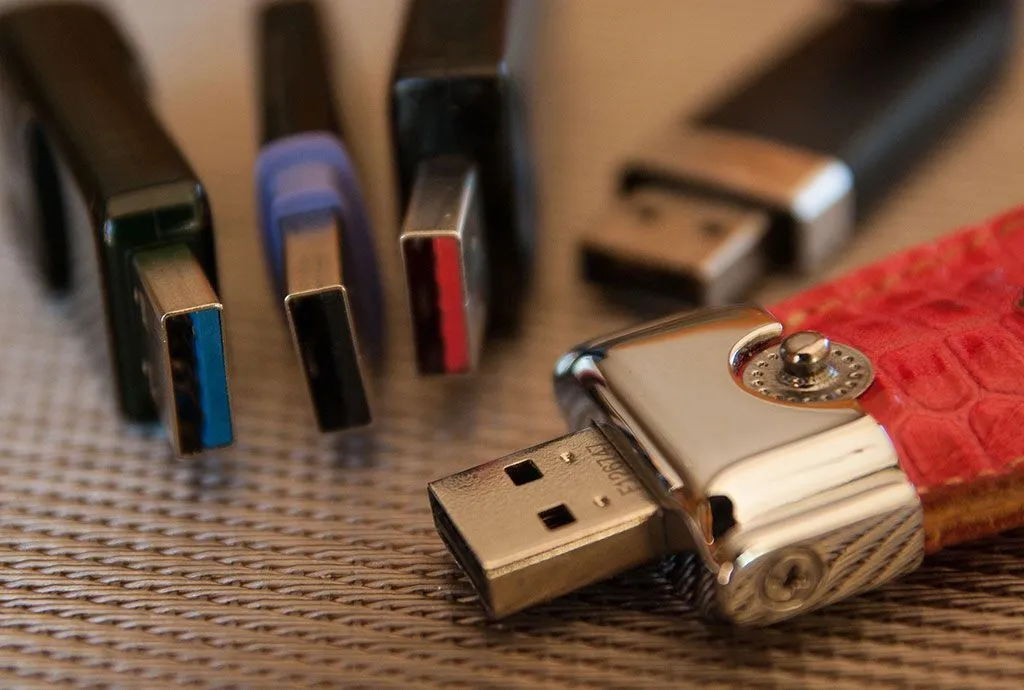USB inventor explains why the connector was not designed to be reversible
USB inventor explains why the connector was not designed to be reversible

Someday we'll look back and laugh (or cry) at our early USB struggles.

USB inventor explains why the connector was not designed to be reversible

Someday we'll look back and laugh (or cry) at our early USB struggles.

You're viewing a single thread.
I get why it's not reversible. But why the hell is it not keyed so that is obvious which orientation is correct? A small, cheap, notch would have worked wonders.
Almost all connectors in use on computers at the time USB was introduced were already keyed, and a fat lot of good it did us. Ask anyone who tried fumbling around behind a three ton CRT monitor or computer case -- even with the keyed connectors, feeling for which side was up, getting anything plugged in without eyes on it was already nigh on impossible.
What the USB A connector did do which was new at the time was introduce a connector that did not have any protruding pins on either the male or female end, and thus theoretically at least could not be damaged by fucking up the insertion. Unlike any of the then-common D-Sub connectors (VGA, serial, parallel) or DIN (PS/2 mouse and keyboard, Apple serial, S-Video, etc.). USB didn't even have the little clip to breal off like an RJ-45 Ethernet or RJ-11 phone line connector.
What the USB A connector did do which was new at the time
Gameboy Link cable did that earlier and subsequently inspired the Firewire connector (and also happens to look a little like Type-C with the contacts in the middle).
okay but the clip on rj connectors is a locking mechanism which usb just lacks… break off the clip and they’re relatively equvelent no?
No. USB uses friction retention, whereas a clip-retention cable sans clip has real risk of simply falling out.
What the USB A connector did do which was new at the time was introduce a connector that did not have any protruding pins on either the male or female end, and thus theoretically at least could not be damaged by fucking up the insertion.
This is not true.
Some 80s computers had cassette player interfaces that practically looked like big USB connectors.
https://www.rarecomputers.com/wp-content/uploads/2019/11/back-picture-c64.jpg
My first computer. Bless you.
There were the early USB plugs that were sort of weird notched trapezoids about 8 mm square (predecessor of mini and micro, USB-B). I always thought those were fine.
Actually looking at this I'm surprised how many other styles there were.
I honestly think that FireWire 400 had a better physical design for the connector. It was keyed more dramatically than some of the other connectors people are citing as being both keyed and easy to orient incorrectly. I personally never had issues plugging in FireWire 400 blind.
The problem for me was never the plug, but the socket. It was obvious to me which side had the connectors, it's the sockets on devices that would be random rotations most of the time. I never really understood the extreme hatred, while it wasn't perfect, it worked well. I inserted successfully a lot more times than not, USB-A served us well in all honesty, but glad we have moved on to reversible.
Keying does no good, have you tried fumbling with a serial port connection before? Same difference, and it's keyed too.
What'd have helped is clear markings and plug heads, like how some DIN connectors are done: The orientation simply cannot be missed.
Yeah, it's orientation I mean more than keying. USB-B was much easier to plug in than A. Orientation is very clear.
It kinda is keyed. Seam goes down.
But does it go right or left, back or forward in other rotations?
Seam goes down, as oriented to the motherboard. If the slots are vertical, usually to the right? If you have a rare, weird machine, just remember which way it goes. FFS, there are 2 choices.
EDIT: Having said all that, not sure I've seen a machine that orients the seam to the left. ?
Until they created upside down Jacks
That's true - I mean to make the keying more obvious. As it stands it's all internal and difficult to see.
Some USB sticks have the logo on one side, some have it on the other...